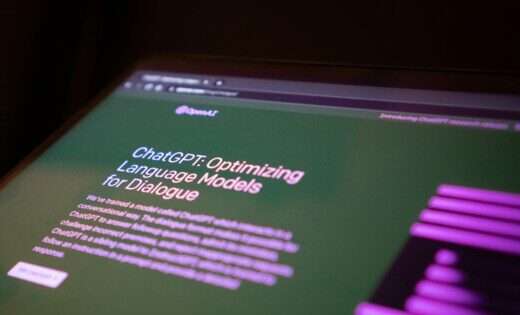on
BY ALYSSA MAHADEO
An instrument of simplicity, the steel pan is an instrument born from industrial waste. An icon of Trinidadian culture the steel pan can be traced as far back as the 1930’s. Often incorrectly referred to as a steel drum, a steel pan is a chromatically pitched percussion instrument made from fifty-five gallon industrial drums mostly used to house oil and other chemicals. The cylindrical part of the oil drum’s shiny metal surface is hammered into a series of dents. Each one creates a different note, subtly different from the ones around it, according to their position and size. The pan is accompanied by an orchestra of other metal objects including car parts, paint pots, dustbins, oil drums and biscuit tins, used as percussion instruments.
In celebration of the steel pan, a musical treasure in the Caribbean community, the Pan Arts Network came together this past weekend to celebrate their 20th year with their annual winter concert Snowflakes on Steel. For the past twenty years, this musical production has been organized and produced by the Pan Arts Network, comprised of a few steelband representatives in the Caribbean community. The show was developed due to a need to fill the void of pan entertainment from the end of summer, through to the following spring. Born in the beautiful tropical climate of the West Indies, many of the diaspora living in Canada crave the tinkling melodies of the steel pan and the organization of this event provides pannists a non-competitive occasion to work towards, while giving the audience another pan related event to attend and enjoy during the winter.
It was a full house at the P.C Ho Theatre Chinese Cultural Centre in Markham for Snowflakes on Steel featuring performances by some of Toronto’s Finest Steelbands. The concert opened with a colourful and vivacious dance number by Dance Caribe, and the audience was greeted with a warm and comedic welcome by host and MC Itah Sadu, a reflection of true Caribbean hospitality.
First performance of the night was by Panatics Steelband Network who delivered a wonderful set of well known songs in their own unique sound. Panatatics was established twenty-six years ago and are among the bands that have performed at Snowflakes since the inception of the show. They began a steel pan network to introduce the art of pan to the Flemingdon Park Community while also integrating the groups with parks and rec and other programs in the area. Their set list for the night was arranged by Gareth Burgess and included a collection of new and old tunes arranged in the colourful sounds of Panatics steel pan. In addition to their orchestra, they were accompanied by a saxophone which added its own breezy jazz flair to the pantastic vibes.
Up next under the studious direction of Elton Jones was a wonderfully performed set by Gemini Pan Groove. Their group was an experienced one, many of the performers members of the group for many years alongside some youthful faces of the next generation of steel pan artists. Gemini Pan Groove uses the steel pan as a tool for community development and also as a foundation to advance the musical art form. They have traveled outside of Toronto to Montreal and the States to perform their wide-ranging repertoire of pan music as demonstrated on the Snowflakes stage. Their performance was outstanding, providing the audience with easy recognizable and classic pieces accompanied by talented vocalists, who added something special to each of their songs.
The Pan Arts Network was proud to recognize the accomplishments of two Women in Pan, and awarded both Suzette Vidale and Giselle Bishop for their outstanding efforts in their trailblazing efforts as steel pan performers. These two women have experienced growth and confidence in their abilities, mastering pan over many years and hope to continue to pave the way for many more young women to take up pan arts.
After a brief twenty-minute intermission, the show was back in full swing as Pan Fantasy took to the stage setting the place on fire! Pan Fantasy has been the Pan Alive Champions for the past five years, winners of the Caribbean Music Award for Best Pan for the past four years and they have also placed 2nd twice and received top honours in New York Panorama Competition. This group of talented pannists know how to knock some good pan, with arrangements Al ‘Allos’ Foster, allowing the sound to travel from the pan through them, as the rhythm moves them. With the talented vocals of Jay Harmony Davis and beautiful traditional Jamaican dancers they put on quite the high-energy performance with set favourites like ‘Hotel California’ and ‘Sugar Bum Bum’. Pan Fantasy has broken barriers along with their 20-95 member band in promoting youth leadership, and dedication to giving back to the community. Theirs is a group formed by the young people of Jane and Finch celebrating thirty-one years of excellence in music.
For many of the people, organizers and bands that took part in the evenings performances at Snowflakes Steel Pan Music and culture is a close-knit community of individuals that consider everyone as family. The support that the Pan Arts Network has received through the years is a reflection of how they have been able to make it this far, and continue to inspire even greater things for the future. In recognition for their Lifetime Achievement in helping the Pan Community to thrive they posthumously awarded, Miley Duke, who started and managed New Dimension Steel Orchestra. He passed away in June, 2015. His son Jermaine Jackson-Duke, wife Janet Jackson, and members of the New Dimension group, accepted the award on Miley’s behalf. Ian ‘Bad Lad’ Gould was recognized for his contributions to the pan community helping make their visions possible. Their Pan Pioneer for 2017 was Joe Brown who was unable to attend, but recognized for all his work with Desperadoes Steel Orchestra. In addition to help further the education of their young artist, Desjardins presented two bursaries to students heading into University/College Corina Sukhai, and Fasasha John for their continued education.
Rounding off the night of pan entertainment with the final performance of the night was Afropan Steelband. Afropan Steelband, formally known as ‘The People’s Band is Toronto’s oldest and most awarded steelband. They were invited to celebrate Bermuda’s 400th Anniversary and made history as the first steelband to visit Africa to celebrate their 50th Anniversary of Independence. Known for their musical versatility, they have thrived in the community for over forty years. With a rare appearance by Earl La Pierre Sr. who arranged their set for the night, he took to the stage with a pan solo to show the audience that he’s still got it panning out a quick paced classical piece. The orchestra then took to the stage, blowing the audience away with their incredible talent, many of the faces young pannists who have been honing their craft and becoming one with the music. Each song had its own classical flair, with a beautiful choreographed dance alongside vocalist Ralph Robinson, the audience was captivated, lost in the carefully synchronized sounds of the steelpan.
The Snowflakes of Steel concert has been sold out every year, and they urge you to get your tickets early because this is definitely something you don’t want to miss! This collection of SteelBands had the audience bobbing their heads to the music and grooving in their seats and enjoying the event from beginning to end. It is very clear to see that the founding members of the Pan Arts Network Andrew Jackson, Earl La Pierre Jr. and Wendy Jones, have put a lot of hard work into creating this event, and it gets better with every passing year. It was clear to see from the smiles on the faces of all the performers as they caress the sound from the pan demonstrates how steelpan has become a way of life. The overwhelming feeling of family bonds and the strength of the community stands behind them, and their panning provokes an emotion that is truly larger than life.
For updates on upcoming events or to purchase tickets for upcoming shows follow the Pan Arts Network on Facebook.
Stay in the loop with exclusive news, stories, and insights—delivered straight to your inbox. No fluff, just real content that matters. Sign up today!












